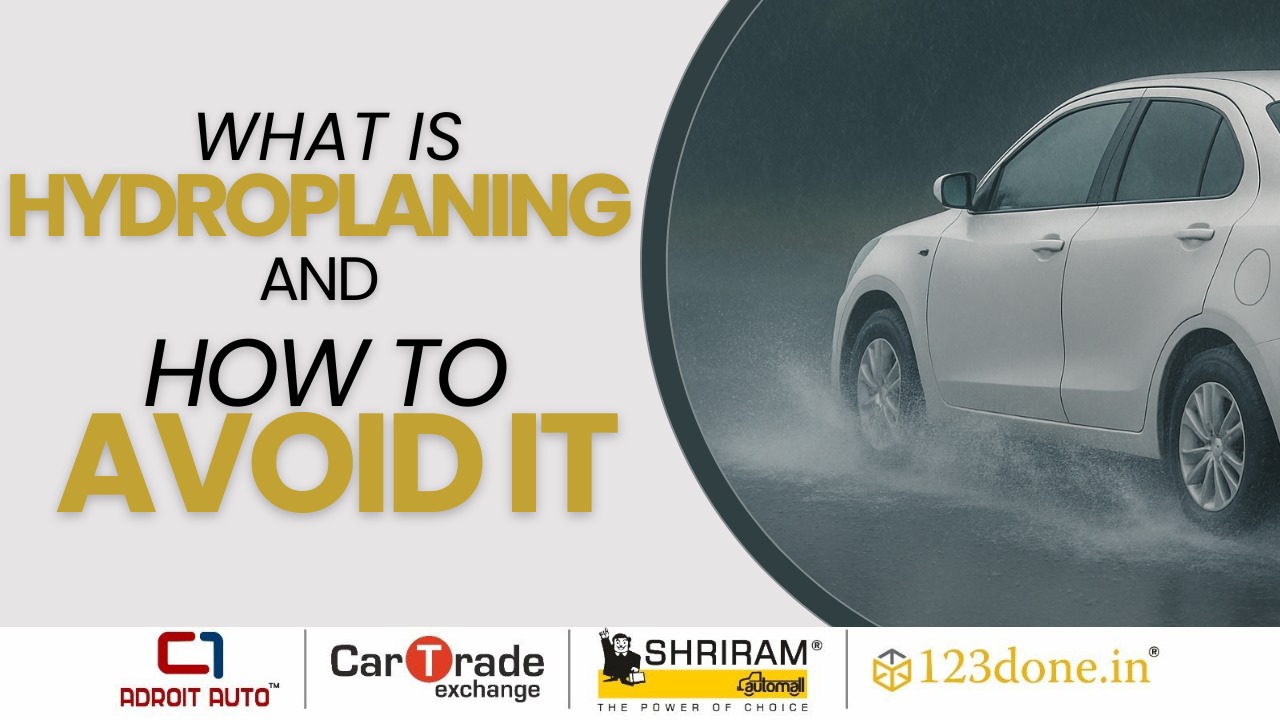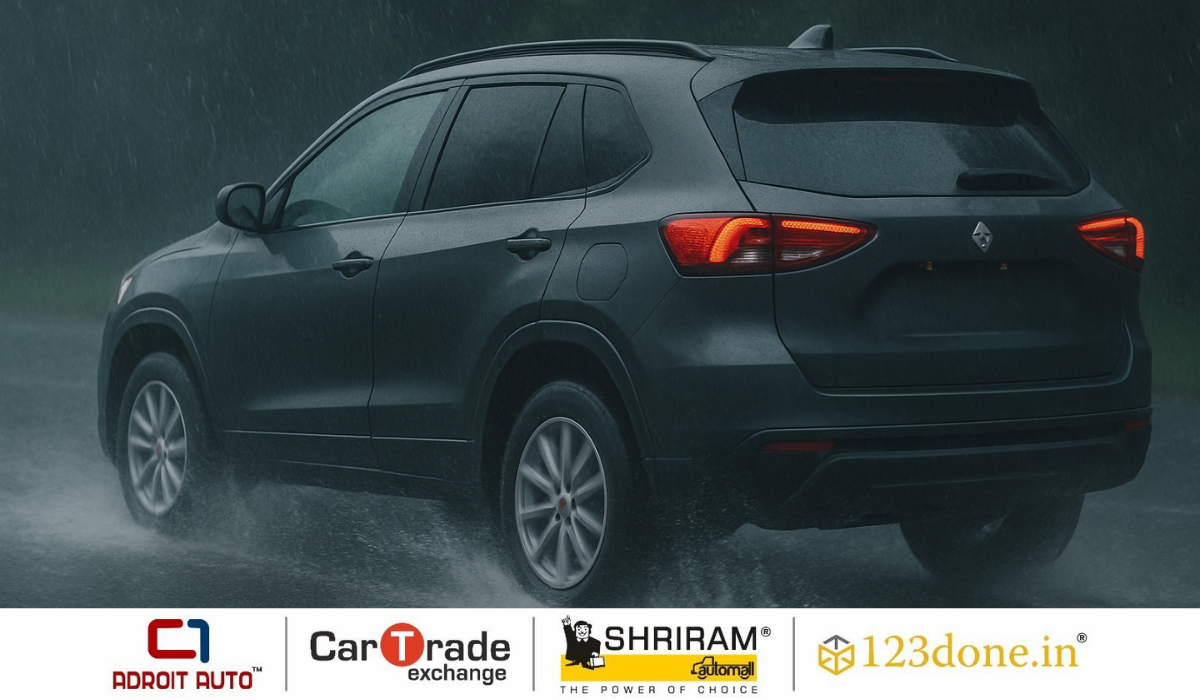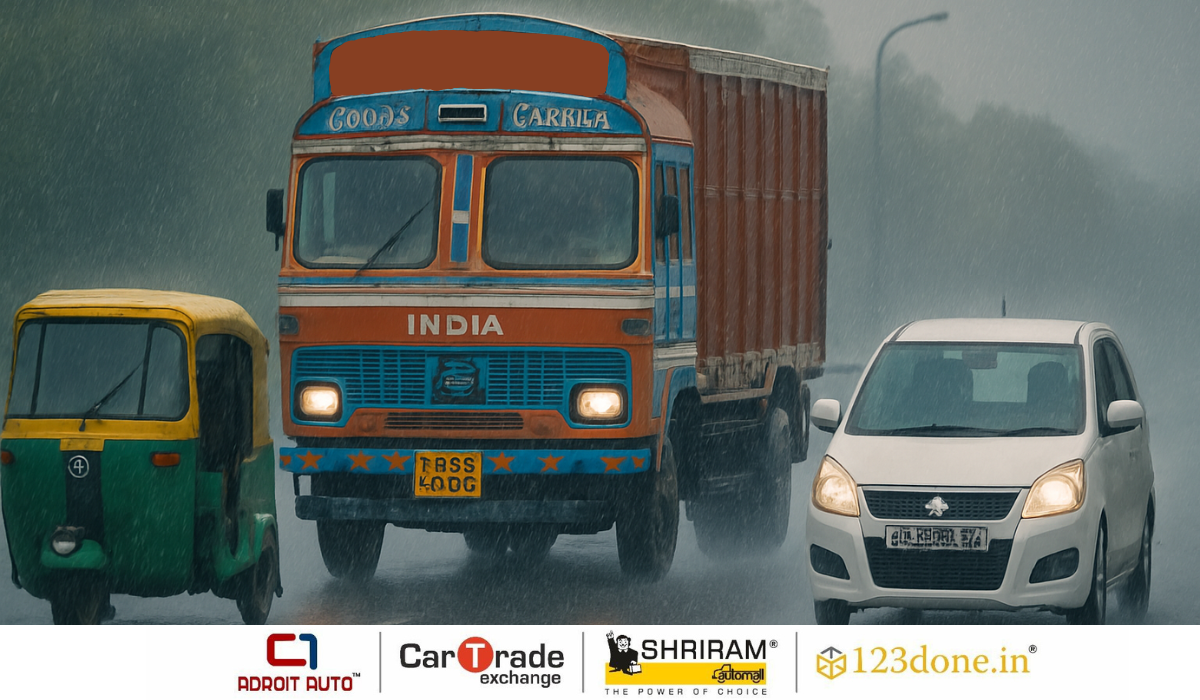What is Hydroplaning (Aquaplaning) and How to Avoid It?

Rainy season or monsoon brings with it many dangers of driving on road. One such situation is known as hydroplaning or aquaplaning. When a vehicle’s tires lose contact with the road’s surface as an outcome of water building between them, the situation is termed as hydroplaning. Rainy roads? Slow down, keep your tyres healthy, steer smooth, and skip those puddles because your grip depends on it.
Picture this, you’re cruising down the highway, rain drumming gently on your windscreen, music playing, everything feels calm. Then suddenly, your steering wheel feels light, your tyres lose grip, and your car glides like it has a mind of its own. No, it’s not your imagination or a movie stunt, you’ve just experienced hydroplaning. And it can happen to anyone.
Let’s dive into the wet and wild truth about hydroplaning and how to avoid becoming a part of the statistics. This guide will tell you what is hydroplaning or aquaplaning and how to avoid it this monsoon.
What is Hydroplaning?
In simple terms, hydroplaning (also called aquaplaning) is when your vehicle's tyres lose contact with the road because of water. Instead of rolling on the tarmac, your tyres end up gliding on a thin layer of water, causing you to temporarily lose steering, braking, and control. It typically happens when you're driving fast on wet surfaces, especially with poor tyre tread or improperly inflated tyres.

Think of it as your vehicle water-skiing, only you're not in control, and the consequences are far more serious.
How to Avoid Hydroplaning
Avoiding hydroplaning isn’t rocket science, but it does require awareness and a touch of common sense. Here's how to keep things grounded when the roads are anything but:
-
Slow down in the rain: Speed is hydroplaning’s best friend. The faster you drive, the easier it is to lose grip.
-
Check your tyre tread and pressure: Worn-out tyres or underinflated ones make it easier to hydroplane. Stay tyre-conscious!
-
Avoid sudden moves: Brake gently, steer smoothly, and accelerate with control. Jerk movements on a wet road can throw your car off balance.
-
Don’t drive through puddles: They might look harmless, even fun, but large puddles can hide deep water, oil, or uneven surfaces.
-
Follow the tracks: If you're behind another vehicle, drive in their tyre tracks, their tyres have already displaced some water.
For knowing more vehicle care tips for rainy season safety, read this blog.
Myths About Hydroplaning
Let’s bust a few myths floating around in the water (pun intended). Hydroplaning comes with a lot of myths, let us break them for you:
-
“Only small cars hydroplane.” Nope. SUVs, sedans, hatchbacks, bikes, all vehicles are vulnerable. In fact, lighter vehicles may lift off more easily, but heavier vehicles take longer to recover.
-
“All-wheel drive protects you.” It might help you accelerate better in slippery conditions, but AWD does nothing to improve stopping or steering during hydroplaning.
-
“New tyres mean I’m safe.” Not necessarily. Even brand-new tyres can hydroplane if they’re overinflated, underinflated, or if you’re driving too fast for conditions.
Hydroplaning doesn’t care about how new your car is or how advanced your tech is, it cares about physics.
All Vehicle Guide for Hydroplaning
Different rides, different rules of the (wet) road. Hydroplaning can occur in vehicles of all segments, let’s break each one of them down:
-
Sedans & Hatchbacks: These lighter vehicles are more prone to skidding. Prioritise tyre health and avoid hard braking.
-
SUVs & MUVs: While they sit higher and heavier, they’re not immune. The risk increases with wider tyres that may float more easily over water.
-
Two-Wheelers: Riders beware. A motorbike can lose traction and balance in milliseconds. Slower speeds, quality tyres, and defensive riding are your best bet.
-
Commercial Vehicles: Trucks, buses, and transport vans have longer stopping distances. Proper maintenance and trained drivers are essential.
-
Electric Vehicles (EVs): Their instant torque can be dangerous on wet roads. Go easy on the accelerator, EVs need just as much caution.

No matter what you drive, the bottom line remains the same, wet roads demand caution.
The Psychological Angle: Why Hydroplaning Feels Terrifying
Hydroplaning isn’t just a physical threat; it messes with your head too.
The moment you lose control, even if for a few seconds, your body floods with adrenaline. Your heart rate spikes. You grip the wheel harder, and for many, panic sets in. That fear doesn’t go away easily, it sticks with you, often making you nervous on rainy days, even long after the incident.
For some, it can lead to driving anxiety, a fear of highways, or even complete avoidance of wet-weather driving. Recognising this psychological impact is important. If you’ve experienced hydroplaning and it’s shaken your confidence, talk about it. Practice mindful driving, drive during safer hours, or seek support if needed.
Because safe driving isn’t just about the car, it’s also about the driver’s mind.
Conclusion
Hydroplaning, or aquaplaning, as it's also called, is one of those road hazards we rarely see coming until we’re right in the middle of it. But knowing how to avoid hydroplaning can turn a scary situation into one you’re prepared for. Stay informed, stay calm, and make sure your tyres and speed match the weather. Because when the rain pours and the roads glisten, you’re not just driving, you’re making micro-decisions that keep you safe.
So next time the skies open up, let the only thing smoothly gliding be your playlist, not your vehicle.

 Download Our App
Download Our App



